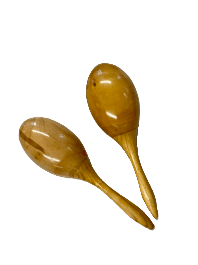Myths about teaching can hold you back
- Year 5
Singing and playing simultaneously: three note melodies
I can read and play a simple three note melody, with a strong pulse, whilst singing simultaneously.
- Year 5
Singing and playing simultaneously: three note melodies
I can read and play a simple three note melody, with a strong pulse, whilst singing simultaneously.
These resources were made for remote use during the pandemic, not classroom teaching.
Switch to our new teaching resources now - designed by teachers and leading subject experts, and tested in classrooms.
Lesson details
Key learning points
- A sound sense of pulse is essential when singing rounds and partner songs.
- Body percussion and actions can help us feel the pulse and stay in time.
- Pitch actions and hand signs help us learn melodies, before playing them on instruments.
- Pitch notation can be read on a stave.
Keywords
Pulse - the regular, steady heartbeat of the music
Pitch - how high or low a note is
Notation - a way of visually representing and recording music
Stave - lines on which musical notes can be placed
Melody - a combination of notes to make a memorable tune
Common misconception
Reading notation is the most effective way of learning a melody.
If the song has been well established, pupils may not even need notation. They will have learnt through singing, pitch actions, chanting rhythms and hand signs.
To help you plan your year 5 music lesson on: Singing and playing simultaneously: three note melodies, download all teaching resources for free and adapt to suit your pupils' needs...
To help you plan your year 5 music lesson on: Singing and playing simultaneously: three note melodies, download all teaching resources for free and adapt to suit your pupils' needs.
The starter quiz will activate and check your pupils' prior knowledge, with versions available both with and without answers in PDF format.
We use learning cycles to break down learning into key concepts or ideas linked to the learning outcome. Each learning cycle features explanations with checks for understanding and practice tasks with feedback. All of this is found in our slide decks, ready for you to download and edit. The practice tasks are also available as printable worksheets and some lessons have additional materials with extra material you might need for teaching the lesson.
The assessment exit quiz will test your pupils' understanding of the key learning points.
Our video is a tool for planning, showing how other teachers might teach the lesson, offering helpful tips, modelled explanations and inspiration for your own delivery in the classroom. Plus, you can set it as homework or revision for pupils and keep their learning on track by sharing an online pupil version of this lesson.
Explore more key stage 2 music lessons from the Sing, play, perform: adding tuned accompaniment to part-singing unit, dive into the full primary music curriculum, or learn more about lesson planning.

Equipment
Pitched percussion with the notes F, A, C', for example glockenspiel, xylophone or percussion tubes.
Licence
Prior knowledge starter quiz
4 Questions
Q1.Rhythm is ...

Q2.Which of these is an example of a pitched percussion instrument?



Q3.A is a song structure where multiple groups sing the same melody but start at different times.
Q4.How would you chant and clap this rhythm?

Assessment exit quiz
4 Questions
Q1.Pulse is ...
Q2.How do we label this hand sign?

Q3.How would you clap and chant this rhythm?

Q4.Jun learns to play a melody by listening to it, singing it, signing it, chanting the rhythm and adding actions. He also reads the notation. How is this effective?




